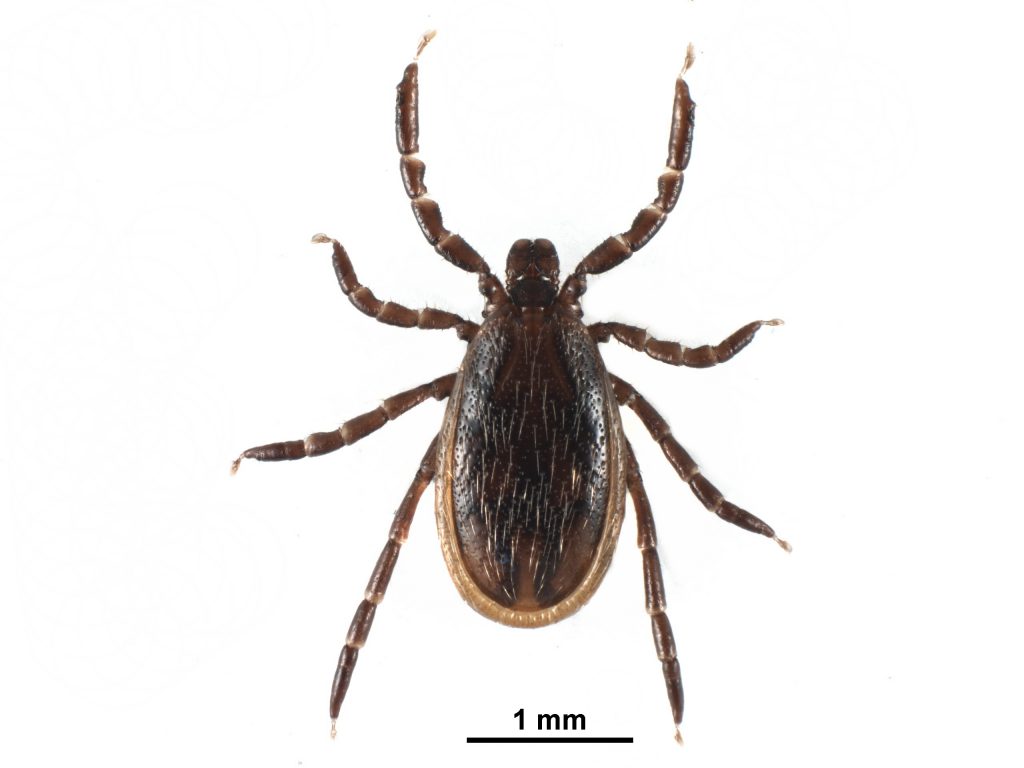41/150: Everything you’ve been wanting to know about ticks!
animalia: Arthropoda: Arachnida: Ixodida: Ixodidae: Ixodinae: Ixodes: Ixodes scapularis (Say, 1821)
The blacklegged, or deer tick (Ixodes scapularis) is widely known as the tick species to spread Lyme disease, a bacterial infection of Borrelia burgdorferi. This species of tick has a distribution throughout Eastern North America, through to southern Ontario. It has been recognized that this distribution is widening rapidly – in part due to climate change and in part due to carriers such as birds, mice and deer ranging to new parts of the continent. The deer tick is not the only species of tick that can carry Lyme disease, with many other members of the Ixodes family carrying the bacteria as well, making the range for Lyme disease far vaster than that of just the deer tick.
Ticks have an interesting life history, developing from larva to nymph to adult. These different stages all need to feed on blood to survive but tend to prefer smaller mammals (such as mice) during the larval and nymph stages, compared to the larger mammals (such as deer) as an adult. Female deer ticks can consume an impressive quantity of blood during their feeding, increasing their body weight by up to 200-600 times while engorging their abdomen. Females have much a much larger abdomen segment than males do, enabling them to nourish their eggs before laying them. #Canada150 #Biodiversity150
Click here for safety tips on avoiding ticks.



Here’s the barcode sequence information for this species:
Process ID: SSROC5666-15
nucleotide sequence
ACTATATATTTAATTTTTGGAAGCTGAGCAACTATAGTAGGAATATCTATAAGAATTTTAATTCGGACTGAATTAGGTCAACCTGGATCATTAATTGGTAATGACCAAATTTATAATGTTATTGTAACAGCTCATGCATTTATTATAATTTTTTTTATAGTAATACCTGTAATAATTGGTGGTTTTGGTAATTGGTTAATTCCATTAATATTAGGGGCACCAGACATAGCTTTCCCTCGTATAAACAATTTAAGCTTCTGGTTATTACCACCCTCTTTATTTTTATTAATTAATTCTTCTTTAGTAGAAAGGGGGGCAGGAACAGGCTGAACAGTATACCCCCCACTTTCATCTAACATTTCCCACTCTGGTGCTTCTGTTGATATAGCAATTTTTTCCCTTCATTTAGCAGGTATTTCTTCAATTTTAGGGGCAATTAACTTTATTACAACAATTATTAATATACGATCTCCTGGAATATCTCTTGAACGCATACCATTATTTGTATGATCAGTTTTTATCACAGCAATTTTACTTCTTCTATCTCTTCCTGTTCTTGCTGGCGCAATTACAATGCTATTAACAGAC——————————————
amino acid sequence
TMYLIFGSWATMVGMSMSILIRTELGQPGSLIGNDQIYNVIVTAHAFIMIFFMVMPVMIGGFGNWLIPLMLGAPDMAFPRMNNLSFWLLPPSLFLLINSSLVESGAGTGWTVYPPLSSNISHSGASVDMAIFSLHLAGISSILGAINFITTIINMRSPGMSLERMPLFVWSVFITAILLLLSLPVLAGAITMLLTD————–

Learn more about it’s BIN (Barcode Index Number): BOLD:AAA1270





























